Dog Anxiety Treatment entails recognizing and managing the numerous sources of anxiety in your canine friend to ensure their well-being and create a harmonious household environment. This comprehensive book delves into the causes of canine anxiety, including separation, loudness, and prior trauma, and offers a full list of treatments for a happy, stress-free existence. Identifying signs like as excessive barking, destructive behavior, and changes in sleep habits is critical for early intervention. By addressing minor indicators of worry, such as difficulties going to sleep, you may provide a supportive atmosphere that benefits your dog’s general well-being.
Consult with a Veterinarian
Seeing a veterinarian is a crucial first step in treating anxiety in your dog. It’s important to rule out any medical conditions that might be causing your pet’s worried behavior before you apply any specific tactics.
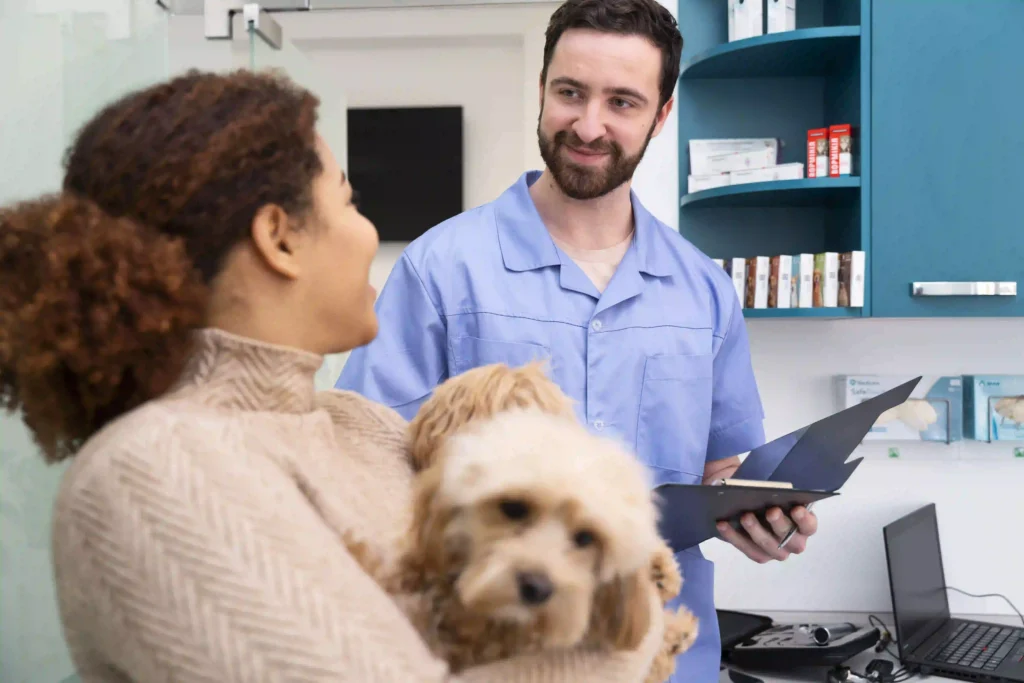
Anxiety symptoms in dogs can be brought on by underlying medical conditions such as pain, hormone imbalances, or neurological problems. A veterinary specialist’s comprehensive examination can assist in identifying any health problems and direct you toward the best course of action. In certain instances, your veterinarian could suggest drugs to treat extreme anxiety, offering a thorough and customized approach to your dog’s health.
Additionally, the veterinarian’s knowledge helps decipher the subtleties of your dog’s behavior. They can assist in distinguishing between symptoms brought on by various medical conditions and those associated with anxiety. Making this distinction is essential to creating a focused and successful intervention strategy. Insights from your veterinarian about possible anxiety triggers for your dog can also help you build a more customized and encouraging environment.
Your veterinarian can also keep an eye on your dog’s development and modify the treatment plan as necessary. Frequent visits to the veterinarian guarantee that the tactics selected are successful and that any recommended medications are well-absorbed. Together with your veterinarian, you can create a complete and all-encompassing plan for handling your dog’s anxiety that will guarantee their general happiness and well-being.
See our latest blog “Is Your Dog Depressed? 4 Warning Signs and What to Do“.
Create a Safe Space
Reducing anxiety and fostering a sense of security in your dog starts with creating a safe space for them. Like people, dogs also benefit from having a special place to go when they’re feeling anxious or overwhelmed.
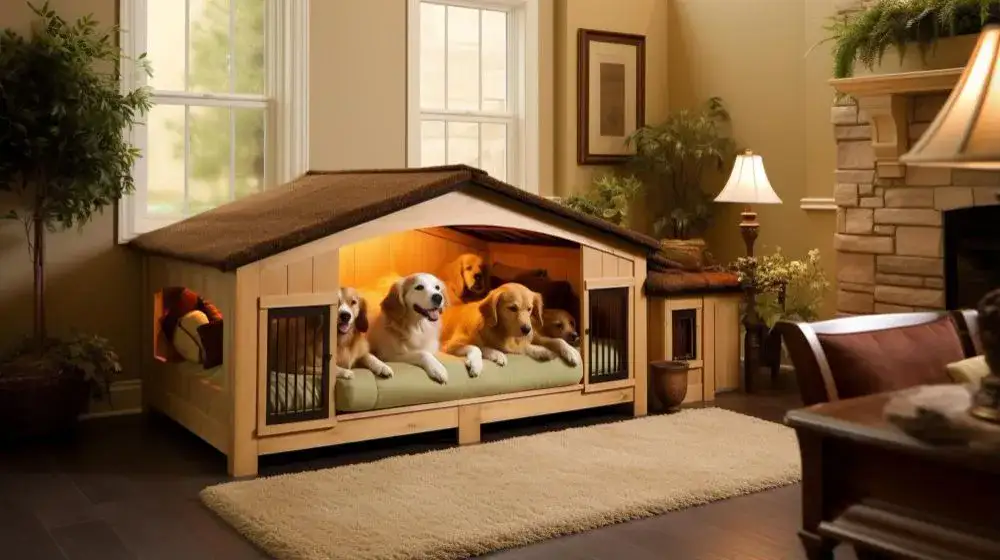
Create a comfortable area with your dog’s preferred toys, bedding, and possibly an article of clothing that smells like you to create this haven. The blend of these well-known components contributes to your pet’s cozy surroundings and is a concrete source of comfort in trying times.
Strengthening the positive associations associated with this safe area is essential to enhancing its efficacy. When your dog voluntarily spends time in this area, reward them with toys or treats to help them associate the place with good things. Your dog will be able to make a strong association between sensations of security and comfort in the safe space and comfort thanks to this positive reinforcement. To help your dog develop a dependable coping strategy for anxious periods, try to establish a routine around using the safe zone. Consistency is essential.
When creating your dog’s secure space, don’t forget to take into account their particular preferences. While some dogs might feel more secure in an enclosed kennel, others might prefer a quiet nook. Keep an eye on your dog’s behavior and modify the safe space’s components as necessary. You can increase the efficacy of this method in giving your dog a haven by customizing the surroundings to meet his or her unique demands.
See our latest blog “Everything You Should Know About Bathing Your Dog“.
Establish Consistent Routines
Creating routines that your dog may look forward to is essential to helping him feel secure and happy. Due to their natural tendency to thrive on routine, dogs frequently experience anxiety when their regular schedule is disrupted. Establishing a regular daily schedule that includes feeding times, walks, playtime, and bedtime is crucial to easing this. Maintaining a regular schedule gives your dog a dependable framework that encourages familiarity and security in their surroundings. Key Components of a Consistent Routine:
- Feeding Schedule Consistent and regular feeding schedules assist in keeping your dog’s digestive system in check.
- Scheduled Walks Giving regular walks at set times each day provides mental and physical stimulation that is vital.
- Playtime To keep your dog’s mind and body active, incorporate supervised playtime.
- Bedtime routine Establish a relaxing evening ritual to promote sound sleep.
Maintaining a consistent routine benefits your dog’s general mental and physical health in addition to lowering anxiety. Their digestive systems are kept in check by regular meal times, and they get vital physical and mental stimulation from planned walks and playtime. A regular bedtime schedule can also encourage a good night’s sleep, which is beneficial to your dog’s general well-being.
By adding consistency to your dog’s everyday life, you may reduce the uncertainty that might cause anxiety by helping them prepare for events and changes. Keep an eye out for evidence of comfort and contentment in your dog’s behavior as you establish and stick to these routines. As necessary, modify the timetable to meet their unique requirements and preferences, fostering a peaceful and stress-free atmosphere that enhances their quality of life as a whole.
Regular Exercise
Frequent exercise is essential for supporting your dog’s overall health, both mentally and physically. Since dogs are inherently energetic animals, regular exercise is very beneficial to them.
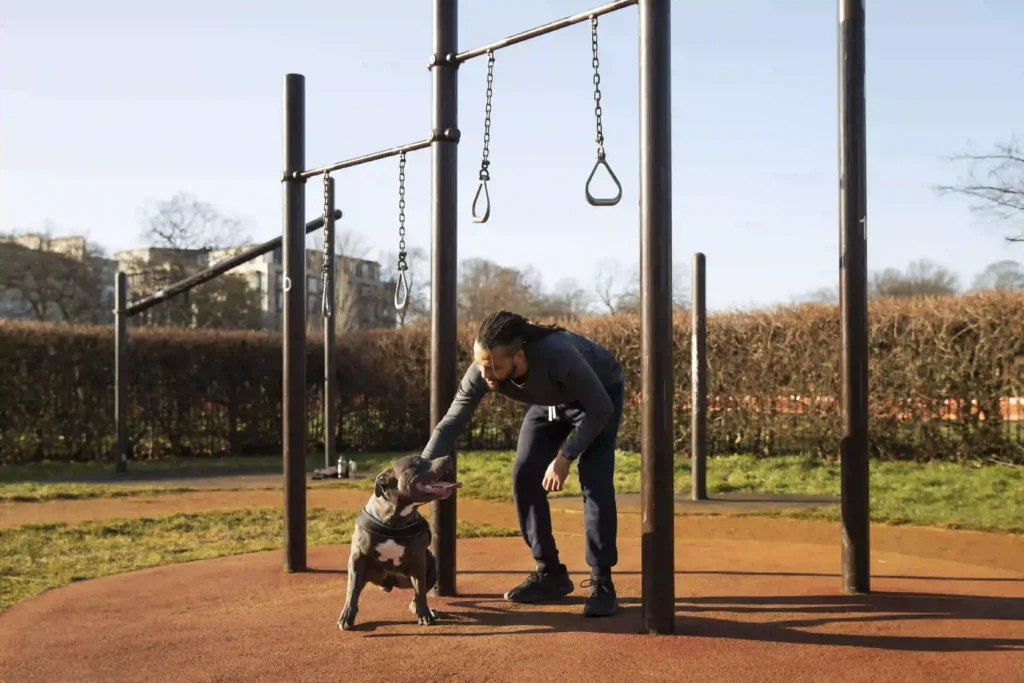
Walking your dog every day, having playdates, and even participating in agility training are great methods to make sure your dog gets the activity they require. Engaging in these activities not only helps you maintain a healthy weight but also works wonders for relieving tension and releasing any stored energy that could lead to anxiety.
Including a variety of exercise activities is essential to maintaining your dog’s physical and mental well-being. While playtime allows your dog to interact with people and their senses, walks provide them with the ability to explore and be exposed to new surroundings. Because it emphasizes both mental and physical obstacles, agility training can be especially beneficial. These activities not only satisfy your dog’s natural requirements but also give them constructive ways to let off steam and lessen the chance of nervous behaviors.
As you make consistent exercise a priority, adjust the exercises to fit the breed, age, and personal preferences of your dog. To guarantee both enjoyment and safety, watch how they respond to various activities and make adjustments as necessary. Regular exercise has advantages for more than just physical health; it also improves your dog’s temperament and lowers stress levels. You help ensure that your pet has a happy, balanced, and anxiety-free existence by including these activities in your daily routine.
See our latest blog “Here’s How Much It Costs to Travel With Your Dog“.
Calming Pheromones
Using calming pheromones is another useful tactic for treating anxiety in dogs. Dogs and other animals generate chemical molecules called pheromones to interact with one another. Calming pheromones, in particular, imitate the smells of a nursing mother and can help calm nervous canines. These items are intended to create a cozy environment in your dog’s living area. They come in the shape of diffusers or sprays.

Pet stores carry products with relaxing pheromones; alternatively, ask your veterinarian for advice. You may easily incorporate many of these goods into your home setting because they are user-friendly. Usually hooked into electrical outlets, pheromone diffusers spread the relaxing aroma throughout the space. Sprays, on the other hand, can be used on particular objects or places where your dog spends a lot of time. This method offers a natural, non-intrusive way to assist the emotional health of your dog.
It’s crucial to be patient and watch your dog’s reaction as you gradually introduce calming pheromones into their surroundings. Some dogs may show benefits right once, but others could need more time to adjust to the relaxing effects. Furthermore, pheromone therapy can be used in conjunction with other anxiety-reduction techniques like making a safe area and sticking to a routine to provide a more thorough approach to guaranteeing your dog’s mental stability and comfort.
Positive Reinforcement Training
Training with positive reinforcement is an effective method for controlling and lowering anxiety in dogs. This kind of training focuses on associating favorable outcomes with desirable behaviors by rewarding them with food, compliments, or other forms of positive reinforcement.
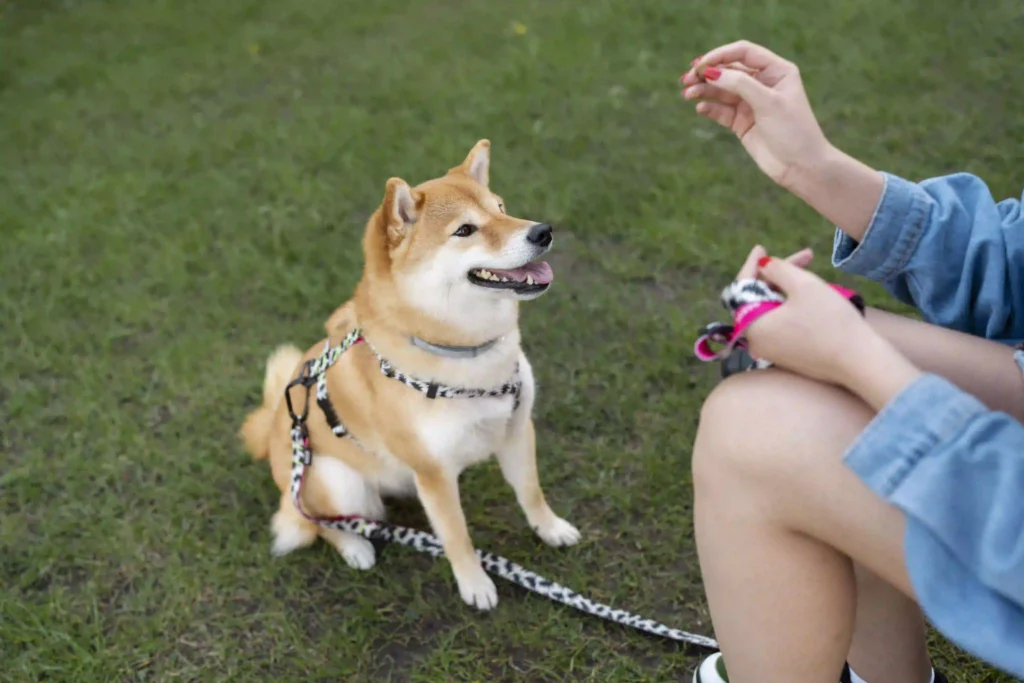
This approach not only helps to improve the confidence of worried dogs but also helps to shape their behavior. Your dog will learn to correlate anxiety-relieving behaviors with positive results if you continually praise excellent behavior, which will help your dog feel safer and at ease. Stressing how important it is to neither condemn nor criticize your dog when they behave anxiously is very important. Negative reactions might intensify anxiety by reiterating feelings of stress or fear. Rather, shift your attention to rewarding good behavior and providing treats when your dog behaves well or reacts calmly. In addition to fostering a supportive learning environment that promotes a more self-assured and laid-back manner, this positive reinforcement method helps you and your dog develop trust.
In positive reinforcement training, consistency is essential. You can incorporate brief, frequent training sessions into your everyday schedule to progressively reinforce desirable behaviors. This approach works especially well for tackling particular triggers that can make your dog anxious. Through constructive and rewarding interactions, using positive reinforcement techniques not only improves your pet’s general well-being but also strengthens your bond with your dog.
Interactive Toys and Puzzles
Using interactive toys and puzzles to keep your dog cognitively engaged is a useful tactic for treating anxiety in dogs. Given their intelligence and aptitude for solving problems, dogs get a great deal from mental stimulation.
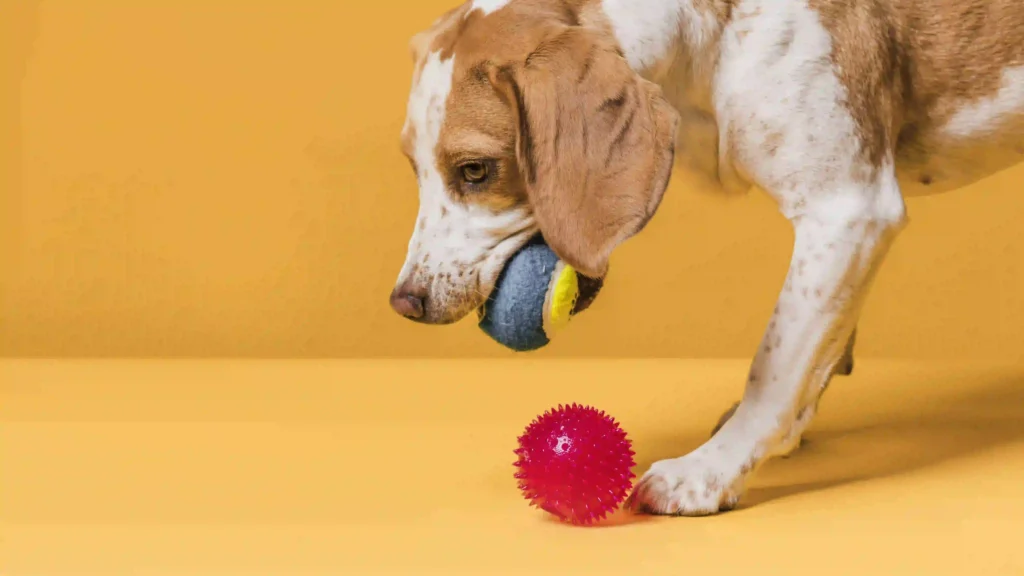
Interactive puzzles and toys are made to mentally test your dog while entertaining them and stimulating their mind. Purchasing such toys can be a useful approach to divert your dog’s attention from things that make him anxious in addition to providing enrichment. These toys come in a variety of shapes and sizes, such as treat-dispensing balls or puzzle feeders, which force your dog to solve puzzles to get to the treats or toys. These activities provide your dog with mental stimulation that helps divert their attention from nervous thoughts and gives them a sense of success when they overcome the obstacles the toys present.
Rotating interactive toys regularly can improve their effectiveness by providing your dog with fresh challenges that will keep them interested and prevent boredom. To increase their impact, these toys can also be included in playtime or used as a component of a positive reinforcement training regimen. By giving your dog a range of mental stimulation possibilities, you improve their mental health and help them have a more contented and balanced existence.
Dog Anxiety Treatment Conclusion
In conclusion, a diversified approach, patience, and understanding are necessary while caring for a dog who exhibits anxiety. You may establish a nurturing atmosphere that aids your cherished dog friend in overcoming nervousness and enjoying a more contented, carefree existence by using the techniques described in this article. To strengthen your link and provide your pet with a sense of security, keep in mind that consistency and positive reinforcement are essential.



After research a few of the weblog posts on your web site now, and I truly like your approach of blogging. I bookmarked it to my bookmark web site listing and can be checking again soon. Pls check out my website online as effectively and let me know what you think.